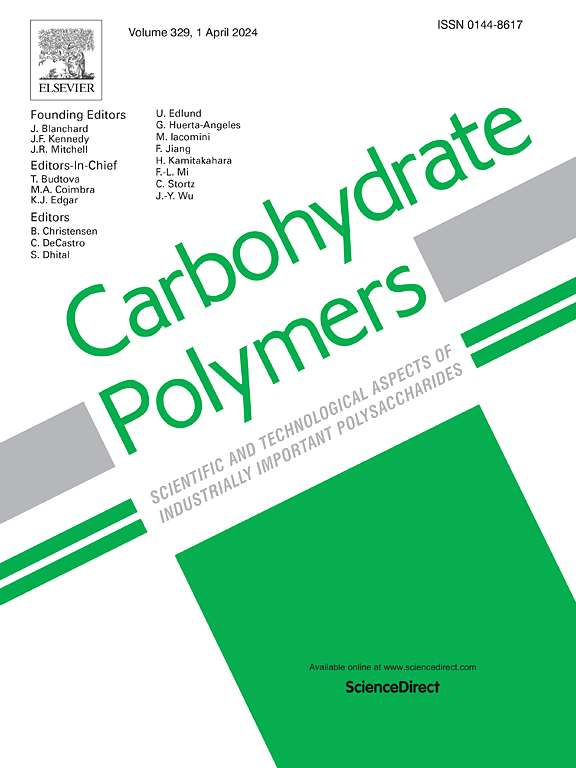IF 10.7
1区 化学
Q1 CHEMISTRY, APPLIED
引用次数: 0
摘要
本研究采用离心纺丝法制备了浸渍茶多酚(TP)的乙基纤维素(EC)/聚环氧乙烷(PEO)纳米纤维。随后,将这些纳米纤维加入海藻酸钠(SA),生成不同纤维含量的多孔复合垫。对多孔复合垫进行了全面表征。研究结果表明,多孔复合材料垫的纳米纤维结构得以保持,多孔复合材料垫的孔隙率在 16 % 到 28 % 之间,水蒸气转移率随着纤维添加量的增加而降低,热稳定性也有所提高。所有多孔复合垫都能有效抑制金黄色葡萄球菌和大肠杆菌的生长,对这两种细菌的抑制率分别为 99.69 % 和 99.54 %,突出了其在活性食品包装中的应用潜力。本文章由计算机程序翻译,如有差异,请以英文原文为准。

Preparation of sodium alginate antibacterial porous composite pads embedded with centrifugally spun nanofibers by freeze-drying and recasting for active food packaging
In this study, nanofibers composed of ethyl cellulose (EC)/polyethylene oxide (PEO) impregnated with tea polyphenol (TP) were fabricated by the centrifugal spinning method. Subsequently, these nanofibers were incorporated into sodium alginate (SA) to generate porous composite pads with varying fiber contents. The porous composite pads were comprehensively characterized. The findings indicate that the nanofiber structure of the porous composite pads is maintained, the porosity of the porous composite pads ranges from 16 % to 28 %, the water vapor transfer rate decreases as the fiber addition increases, and the thermal stability improves. Additionally, the pads demonstrated enhanced slow-release characteristics, and the cumulative TP release reached 70 % to 81.44 % within 120 h. All the porous composite pads could effectively inhibit the growth of Staphylococcus aureus and Escherichia coli, and the inhibition rates of the two bacteria were 99.69 % and 99.54 % respectively, highlighting their potential application in active food packaging.
求助全文
通过发布文献求助,成功后即可免费获取论文全文。
去求助
来源期刊

Carbohydrate Polymers
化学-高分子科学
CiteScore
22.40
自引率
8.00%
发文量
1286
审稿时长
47 days
期刊介绍:
Carbohydrate Polymers stands as a prominent journal in the glycoscience field, dedicated to exploring and harnessing the potential of polysaccharides with applications spanning bioenergy, bioplastics, biomaterials, biorefining, chemistry, drug delivery, food, health, nanotechnology, packaging, paper, pharmaceuticals, medicine, oil recovery, textiles, tissue engineering, wood, and various aspects of glycoscience.
The journal emphasizes the central role of well-characterized carbohydrate polymers, highlighting their significance as the primary focus rather than a peripheral topic. Each paper must prominently feature at least one named carbohydrate polymer, evident in both citation and title, with a commitment to innovative research that advances scientific knowledge.
 求助内容:
求助内容: 应助结果提醒方式:
应助结果提醒方式:


